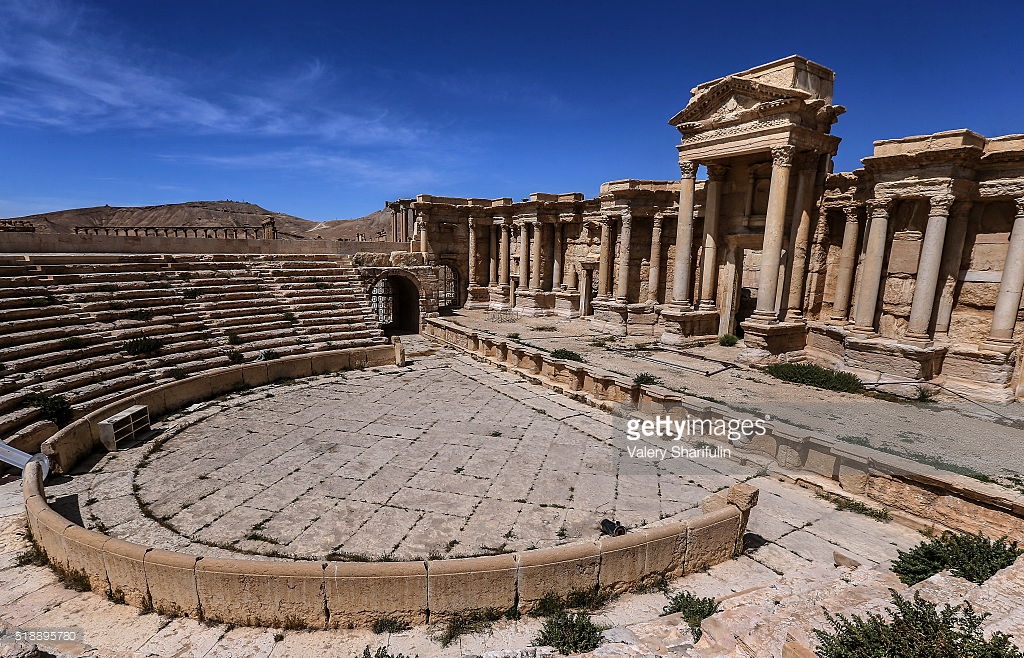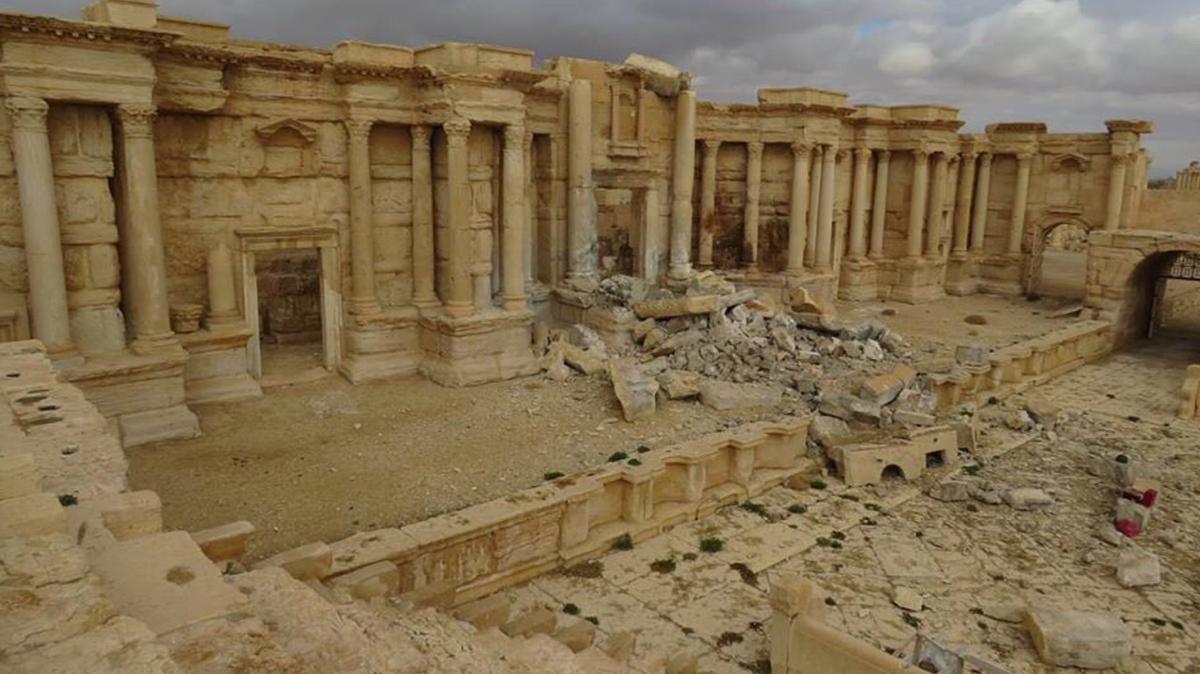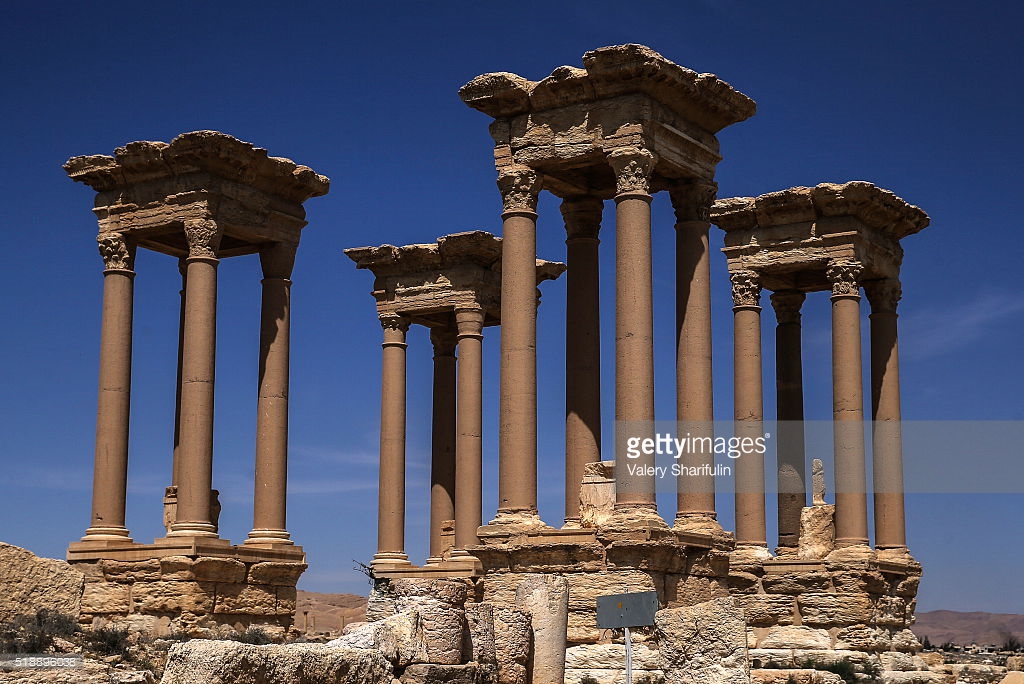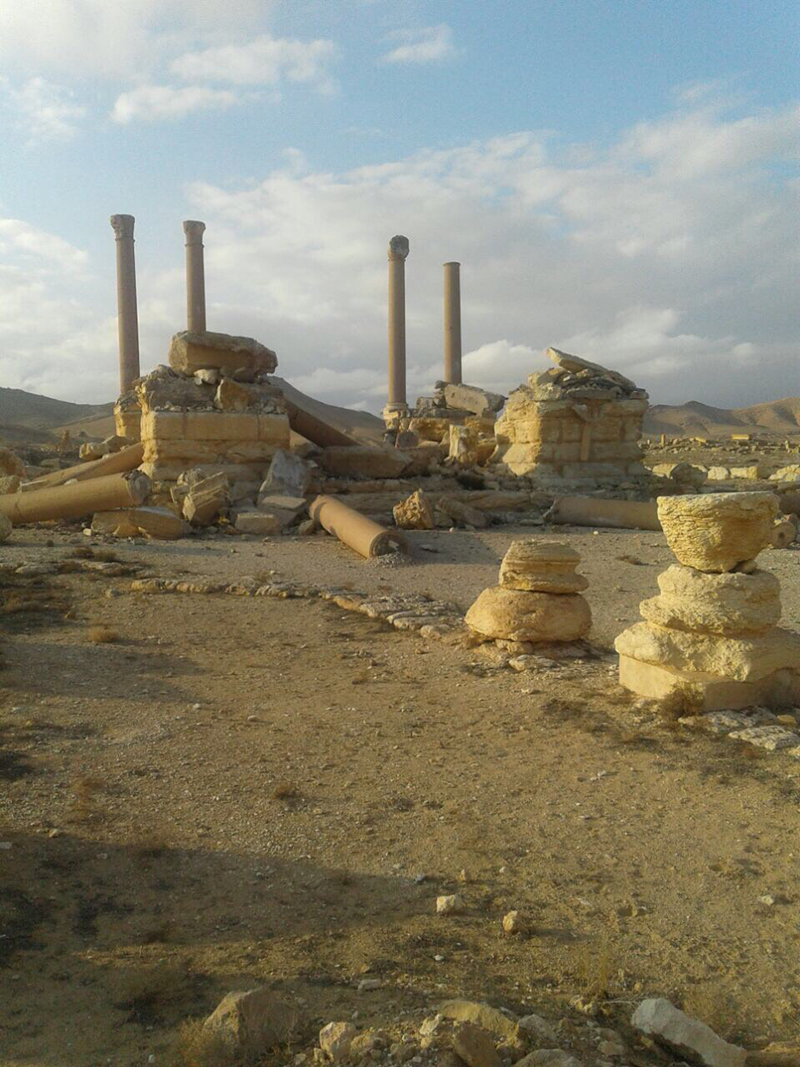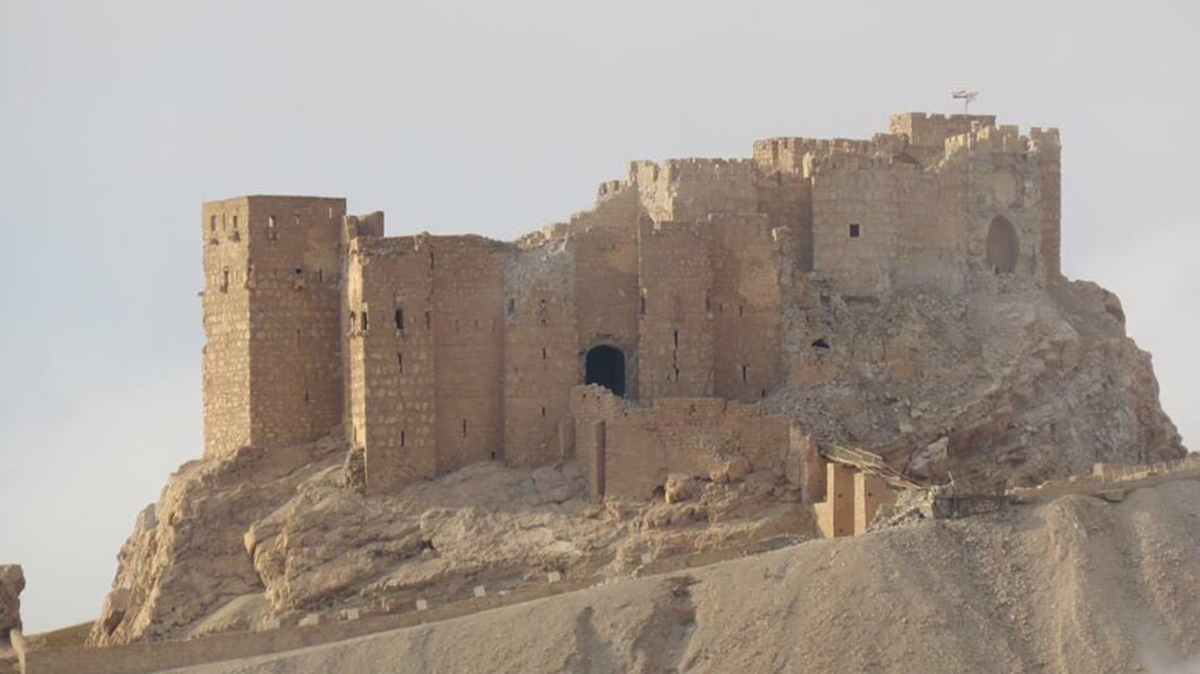In January 2017, reports surfaced that ISIL militants had carried out a new wave of executions, including one inside the Roman Theater. Satellite imagery showed debris in the center of the stage, though the extent of the damage was previously unknown. New photographs show that the Roman Theater has sustained damage to the stage backdrop (scaenae frons), primarily in the area of the Porticus. The main entrance of the stage backdrop was badly damaged with the peaked roof and columns destroyed with debris scattered across the stage.
Palmyra’s late 2nd-century CE Severan-period theater is located southwest of the colonnaded Decumanus. The theater is unfinished, consisting only of the lowest level of seating, the ima cavea (the media and summa caveae would normally be above this lowest section, which is reserved for the elite), but still represents one of the best preserved Roman theaters in Syria. The Roman Theater is ringed by a colonnaded portico that opens onto a colonnaded street leading to Palmyra’s Southern Gate.
Satellite imagery also confirmed that ISIL militants had destroyed the Tetrapylon. Photographs recently shared by DGAM show four pillars of the original 16 still standing, while the other 12 have been heavily damaged and are scattered around the base of the monument.
The Tetrapylon at Palmyra consists of four large plinths, each supporting four columns topped by a massive corinth. This type of tetrapylon is called a tetrakionion, in which the four corners of the structure are not connected overhead. The main colonnaded street of Palmyra changes direction twice, and at these points unique architectural devices — the Triumphal Arch and the Tetrapylon — were built to make the route appear more harmonious. Only one of the original pink Egyptian granite columns survives — the others are modern reproductions.
Video footage of the Citadel released by Ruptly TV shows the presence of armed forces, possible evidence of militarization of the site, as well as extensive explosives damage. The Citadel has suffered repeated war-related damage incidents the last few years, and it is often difficult to discern the impacts of recent incidents from earlier damage using the available photo documentation. It is clear, however, that ongoing clashes and aerial bombardment since ISIL captured Palmyra/Tadmor have severely damaged the ancient Citadel.

